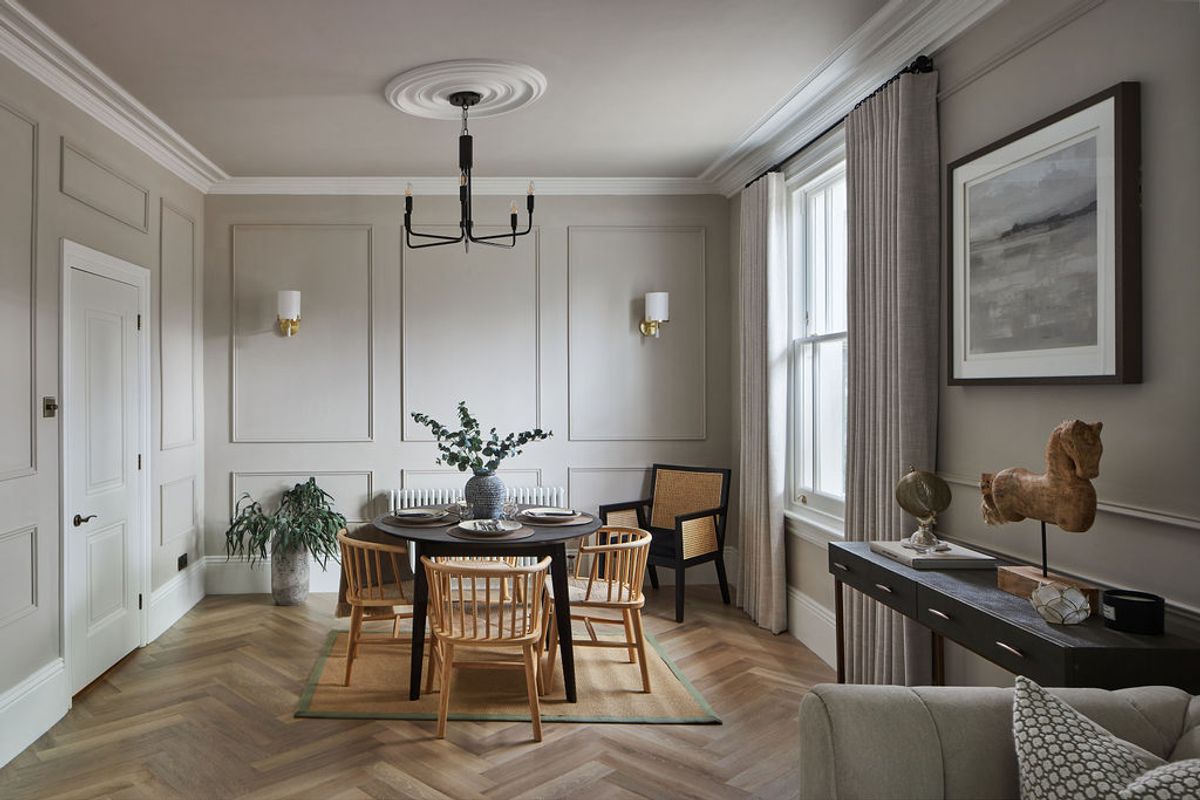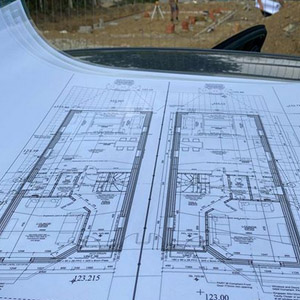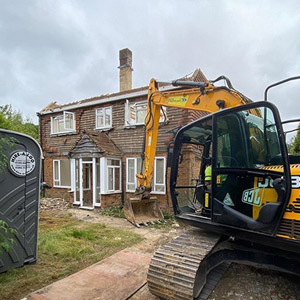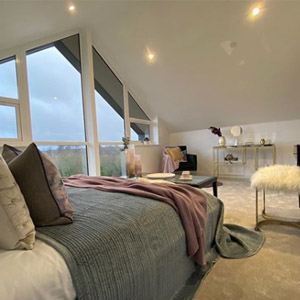Social media’s influence on the property market is growing — much to the dislike of estate agents
Some people spend their lives on Instagram. Spot a photograph of a pretty room or influencer, and before you know it hours have gone by scrolling. Worldwide, the average user spends 32 minutes a day on the app, but in the UK for the majority of “fashion and lifestyle shoppers” it’s one to three hours a day, according to a 2022 survey by Statista. Insta is influencing what we buy from fashion to food — and now houses.
A growing number of small developers are ditching Rightmove and estate agents and selling directly to followers. Chris Hammond, a developer operating in Kent and Sussex, has 4,970 followers on his company account, @beauproperty. Insta brought him two of the buyers for his most recent scheme, Nevill Row, eight mews houses in Tunbridge Wells. And while Hammond used an estate agent to execute the transactions, for his next project, seven homes in Southborough, Kent, his aim is to sell all seven properties on Insta and cut out the agent altogether.
Danny Inman, a Cheshire-based developer who has built 1,000 properties in his ten years in the game, has 33,000 followers on @dannyinmanproperty and sells about 35 per cent of his properties through the app, resorting to an agent only when his stock hasn’t sold off plan.

“Instagram is the future in property,” says Inman, who gets 8,000 notifications a day on his account. “Agents and Rightmove are at risk of getting left behind. Ultimately, where are most eyes going? We check on social media to decide if a restaurant looks good, and I think that’s the way housing is going to go.”
There are practical reasons for cutting out the middleman. Hammond says developers save on the 1 per cent commission they would normally pay an estate agent; Inman estimates he will save £100,000 in agent fees by selling his next project, the Paddocks in Plumley, Cheshire, on Insta. But social media also allows developers to gauge levels of interest — estate agents keen to keep instructions are not always candid with them — and to have direct engagement with potential buyers. Hammond can see the ages and locations of his followers, the other accounts they interact with and which hashtags they follow.
“On Rightmove you don’t have that same connection,” Hammond says. “We do video stories of what the property is looking like up to the minute and keep them up to date on how the build is progressing. People follow our progress and message us privately, saying, ‘As soon as something comes up, can you let us know?’ And they get that kind of scrolling sensation with Instagram, that addiction-type set-up, and they’ll keep getting reminders because of the algorithm. Whereas with Rightmove it’s less addictive . . . there’s less dwell time than on Instagram, where people get sucked in a lot more.”

Which is all very well for developers, but what’s in it for buyers? “There’s a direct line of communication,” Inman says. “Removing the third party [the agent] from the negotiations and getting direct access to the potential buyer has so much value. We can offer them things that the agent might not think of or know of. We can listen to the buyer’s objections and see if there’s anything we can do. We can negotiate on price very directly. The buyer can say, ‘This is what I want, can it happen?’ Whereas if a seller went to an agent and said, ‘I want to give you £1.8 million now and another £200,000 in a year,’ the agent would go, ‘No, no, we’re not doing anything like that.’ Sometimes agents, no matter how good they are, muddy the waters.”
Inman’s Insta feed is not full of the usual glossy property-porn photos. Instead it’s dotted with memes and punchy, straight-talking market analysis. He says this is a strategy for building trust and engagement with followers who will then share his posts with friends — he has found a number of buyers through tagging. “We’ve made a decision to be authentic. We’re contrarian. People buy into that. We make light of the industry because it’s a challenging industry, despite what the get-rich-quick guys tell you . . . It’s much more important to have a personal brand than a business brand. A lot of success will come from whether people can connect with the individuals behind the company. If you look at Richard Branson, he has 4.8 million followers on Insta; Virgin has only 235,000.”
To build his personal brand Hammond peppers his feed with more typical Insta fare: personal family shots (including photos of his wedding day), holiday snaps and aspirational slogans (“Life is better when you’re laughing”, “empowered women empower women”).

Personal branding and a more individualistic, American-style brokerage system will increasingly take hold in the UK property industry, spurred on by Instagram, according to Daniel Daggers. Formerly an estate agent with Knight Frank, he has founded DDRE Global, a “digitally driven real estate business”. The super-prime specialist has 54,500 followers on his personal Insta, @daniel_daggers, and 17,600 on @teamddre, and also has a presence on TikTok, Snapchat and Facebook.
“If you want to buy a property and rely solely on walking into an office and meeting a stranger or calling up a random person, there is no trust equity. Whereas if you’ve been following Daniel Daggers for years on digital channels, you know so much more about me. People know what I do in my spare time. They know that I’m an Arsenal fan. They know what clothes I wear. I bought a very nice pair of sneakers and I got a client from that. They know where I go on holiday, they know about my relationship with my parents, they know I’m Jewish. They know if we have mutual friends. There’s more trust when someone you know is connected to that person. Social channels are a form of reference.”

So how does the property content on Insta differ from Rightmove? Daggers says he makes personal appearances in videos and chats; sometimes homeowners do too. “You want to evoke emotion. So for instance, we’ve used classical music and rap music on stories. When we sold a property not long ago for just shy of £20 million, we produced a beautiful video of the place set to R&B/hip-hop. We knew we were probably targeting a western family and that they would be in their forties. The video went viral. We got it in front of the right people, ultra-high-net-worth kids in New York who loved it and shared the video. And in many instances it’s the kids who influence the parents.”
His high-end clients also prefer selling on Insta because it doesn’t leave a digital footprint the same way Rightmove does — on the portals buyers can see if a property has been languishing on the market or had to have its price reduced. On Insta posts can be deleted. The whole business model for selling property is changing, Daggers says. “It’s not about how many offices you’ve got. It’s about your reach. For the £20 million house we put beautiful content all over digital channels. We had well over a quarter of a million impressions. A third party introduced us to a buyer. Eight per cent of transactions in a super-prime market and new-builds happen by a third-party introducer.”
Which is where the shares and tags come in. In the future, your dream home may only be a “like” away.
To view the original Times article click here.











